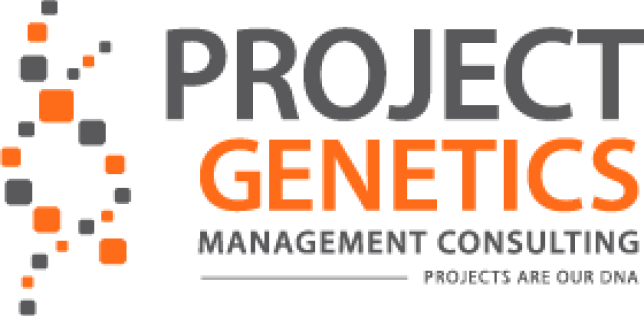On today’s show, we discuss how changing customer interactions can increase revenue.
National design firm Mancini Duffy – with a 100+-year-old history and tech-forward approach – is a full-service design firm specializing in architecture, planning, and interior design. Headquartered in New York City with regional offices in Millburn and Red Bank, New Jersey, the practice complements its century of expertise with contemporary entrepreneurial spirit and technological skill for clients in the commercial, education, financial and professional services, retail, healthcare, multi-family residential, restoration, institutional, religious, sports, tech and media sectors.
Jeff Anderson is an Associate and Design Lab Developer at Mancini Duffy. At Mancini, he conducts design research and develops architectural visualization tools. Jeff’s also an educator, architectural designer, and AR/VR software developer. He currently teaches in the Graduate Architecture & Urban Design program at Pratt Institute and the Graduate Architecture Program at the University of Pennsylvania.
Jeff is a Co-Founder and Chief Technology Officer of The Toolbelt. A patent-pending software that allows Mancini’s clients to explore and manipulate 3D models in Virtual Reality to visualize and make design modifications for their projects together in real-time. Utilizing The Toolbelt, Mancini’s designers can do in 3 hours what it takes most 3 weeks to do.
He holds a Master of Architecture II from Princeton University, and both a Master of Architecture and a Bachelor of Science in Architecture with Honors and Distinction from the Knowlton School of Architecture at Ohio State University.
Michael Kipfer is a Principal at Mancini, where he spearheads research and development efforts at Mancini. A co-founder of Mancini’s research and development arm, the Design Lab, Michael pushes the boundaries within architecture and design. The Design Lab was born by exploring and adapting technology such as artificial intelligence, augmented and virtual reality, 3D printing, and drones to communicate seamlessly between the client and the architect. The space is where the incubation of ideas merge with technology to develop cutting-edge services and encourage dynamic collaboration with clients.
In addition, Kipfer works with in-house software developers and designers to integrate technology into the firm’s everyday operations using Mancini’s unique 360 Design Process and patent-pending The Toolbelt software.
Kipfer received his Bachelor of Arts in Architecture from the University of Kentucky and Master in Architecture from the University of Pennsylvania.
Key Takeaways:
What kind of changes did Mancini make to engage with the future?
Traditionally, the industry has several phases: Pre-design, Schematic design, Design development, Procurement, and Construction. The architects prepare materials to show to clients at biweekly meetings throughout these phases. Today’s customers expect more interaction. The industry was falling behind. We invented a whole new design process – 360 design process. Using AR, VR, 3d printing, projection mapping, we invite the customers to see the process. It’s become a great communication process and we have less time wasted on design elements the customer doesn’t want.
How did you come to explore these technologies? Was there a testing process?
In school, Jeffrey started playing with game engines as a way to produce and experience architecture. For his thesis, he made VR design software using gestures. After graduation, he came to Mancini to continue his work. Working with a client, he developed tools that are sold as The Toolbelt software through a spinoff company called The Toolbelt Company.
What kind of reaction have you had from clients?
Customers enjoy acting out their processes in the potential space. It’s great not only from an aesthetic point of view but from an operational point of view.
How did you think to engage Jeffrey?
Ultimately, we want to work smarter, not harder. We asked ourselves, “Why are we drawing this in 2D when most people can only see it in 3D?” The new technology makes communication very clear with the customer. They understand better what they are getting.
What lessons have you learned and what do you see coming 5 years from now?
- Initially, our hardware was so advanced that when we shared The Toolbelt with a client, it wouldn’t run on their machines. We are working toward improving the exporter/importer to make the 3D models lighter and accessible to more client devices. The sophisticated software was initially modeled toward accuracy, rather than polygon rendering efficiency. Adapting it to run on more machines would allow us to engage with clients that don’t need to come to the special lab, although the special lab has gotten us clients that appreciate that distinct design experience with an architect.
- VR is embraced by some but not others. But AR is more accepted and is exciting for our industry, especially in regards to mock-ups.
- In the 3D printing world, we learned how AR and VR can come together with an actual product by creating innovative artwork with a 3D printed brick system that integrated with the brick and mortar bricks.
Has it changed the demographic of your clients?
We are working with more startups, which are generally run by younger people. This generation is used to highly interactive technology. Our process caters itself to the tech-hungry types of clientele. They are often still trying to figure out what they need, and we are able to coach and help them visualize what they want. We are also attracting more experience-based clients where there is a focus on the customer experience, such as restaurants.
Have you seen more innovative design since it’s quicker and more interactive?
There are definitely more iterations of the design through this process. The concepts that come out of the sessions are a lot more powerful, making the time spent more productive, focusing on what we know is important to the client. The challenge is keeping the client decisions at a higher level when they are able to see their concepts so clearly so that they aren’t trying to become the designer themselves, getting into minute details during the design phase.
Does this process sometimes make the client feel like they could just do it themselves?
The technology helps to make the decision-making process easier, but not the process overall. It’s important to have the expert in the room during the interactions with clients so that the decisions made are sound.
Top 3 Thoughts:
- Things don’t always have to be how they’ve always been. This design process embedded in the discipline needed to be improvised in light of new technologies. We’ve found a lot of efficiencies in that and by having clients that aren’t afraid to experiment, we’ve made things better for both the clients and the designers.
- These changes allow for the client to be involved in the R&D process. It doesn’t always go right, but when the clients see that they are part of something special, it’s ok that it doesn’t always go right. Always experiment. Always ask questions. Always be completely open and transparent. Don’t be afraid to test something.
- Being willing to try new things can have an unexpected results. The changes we made have brought in a diverse mix of clients that we didn’t have before.
How to Connect
Mancini Duffy website: https://www.manciniduffy.com
The Toolbelt website: https://thetoolbelt.com



